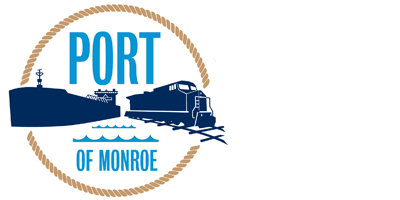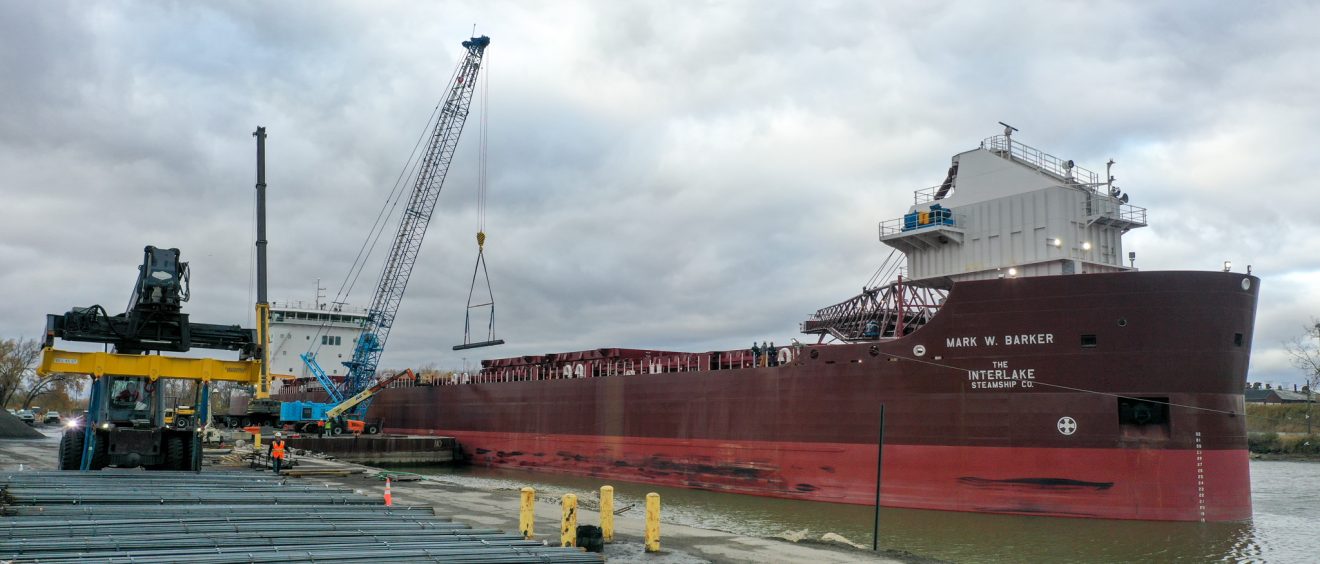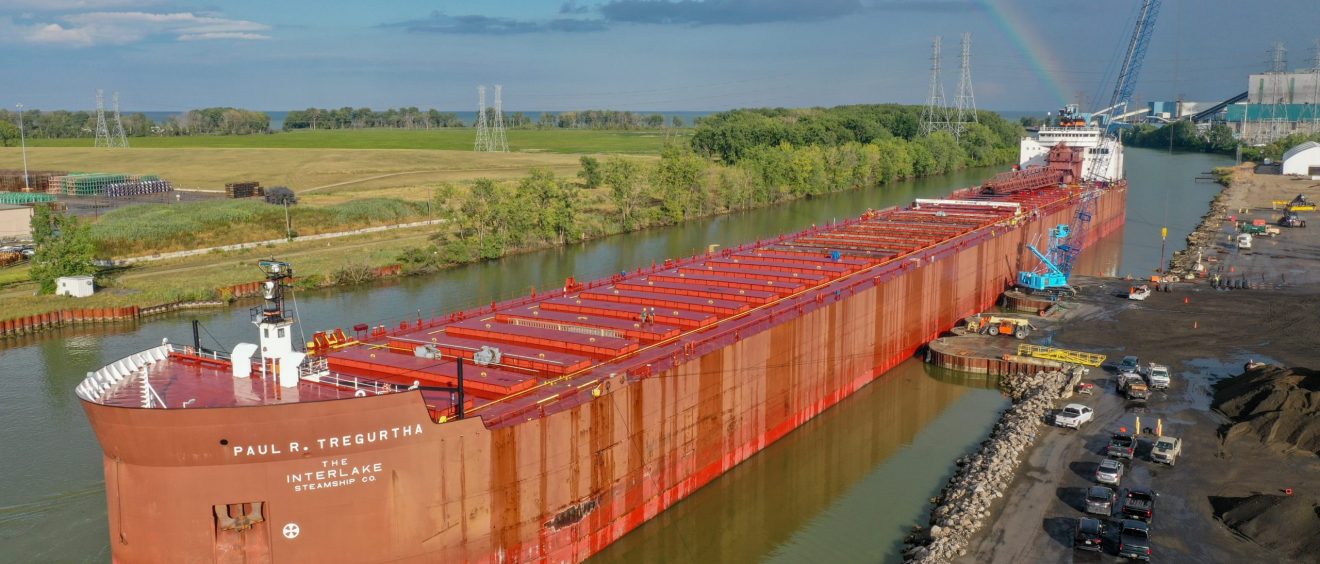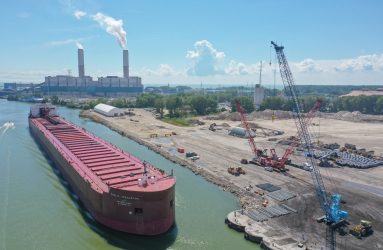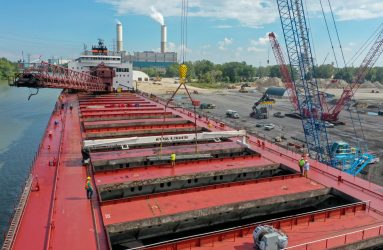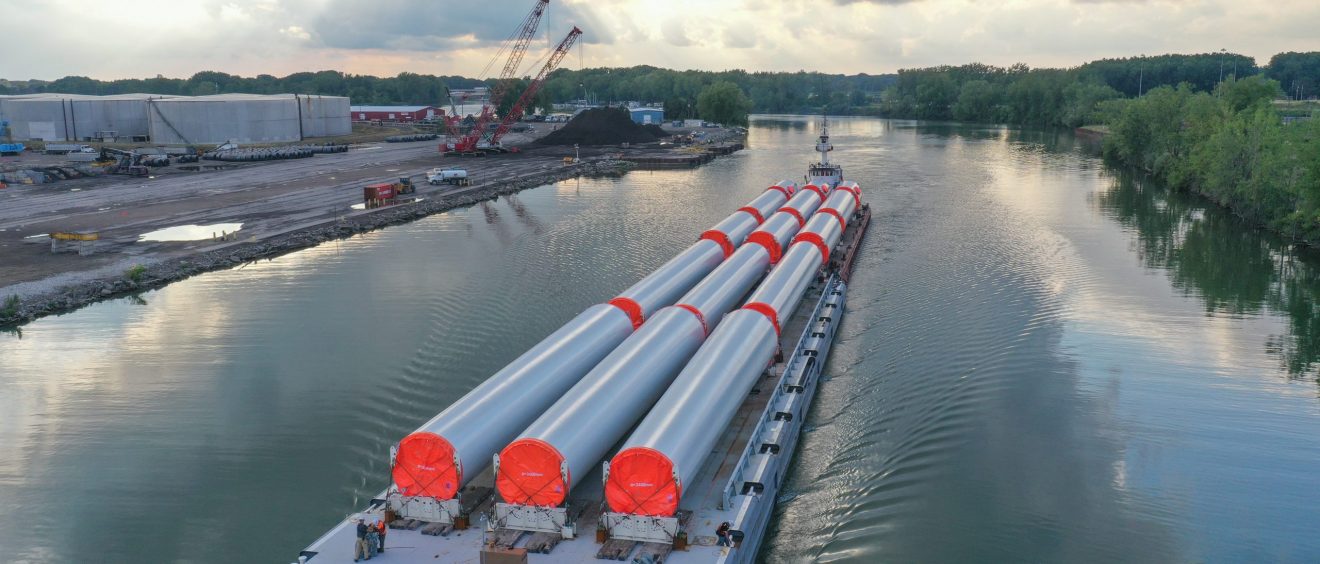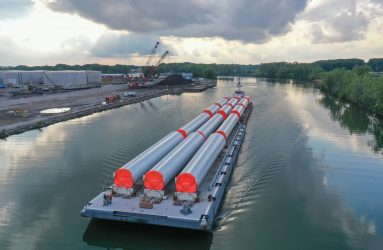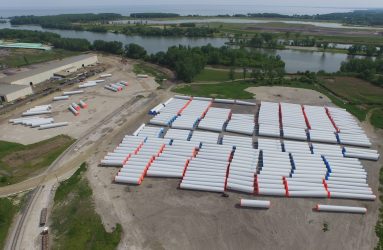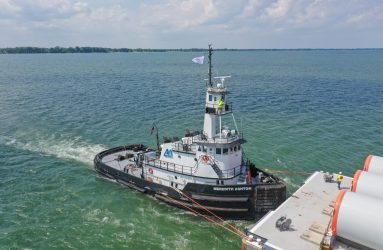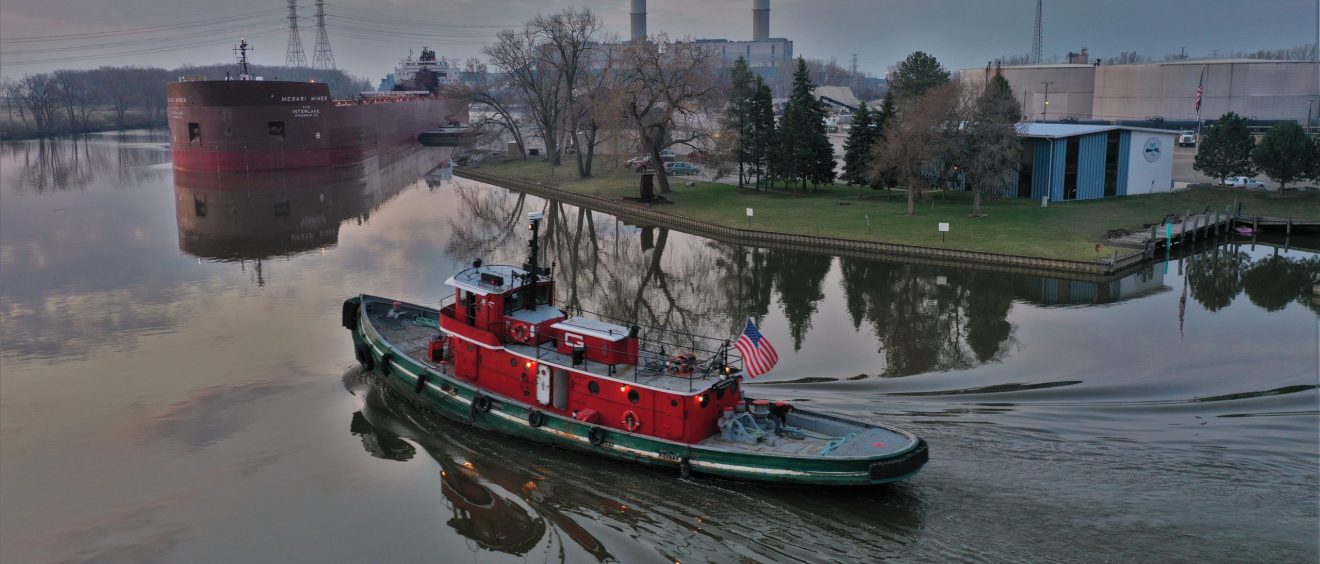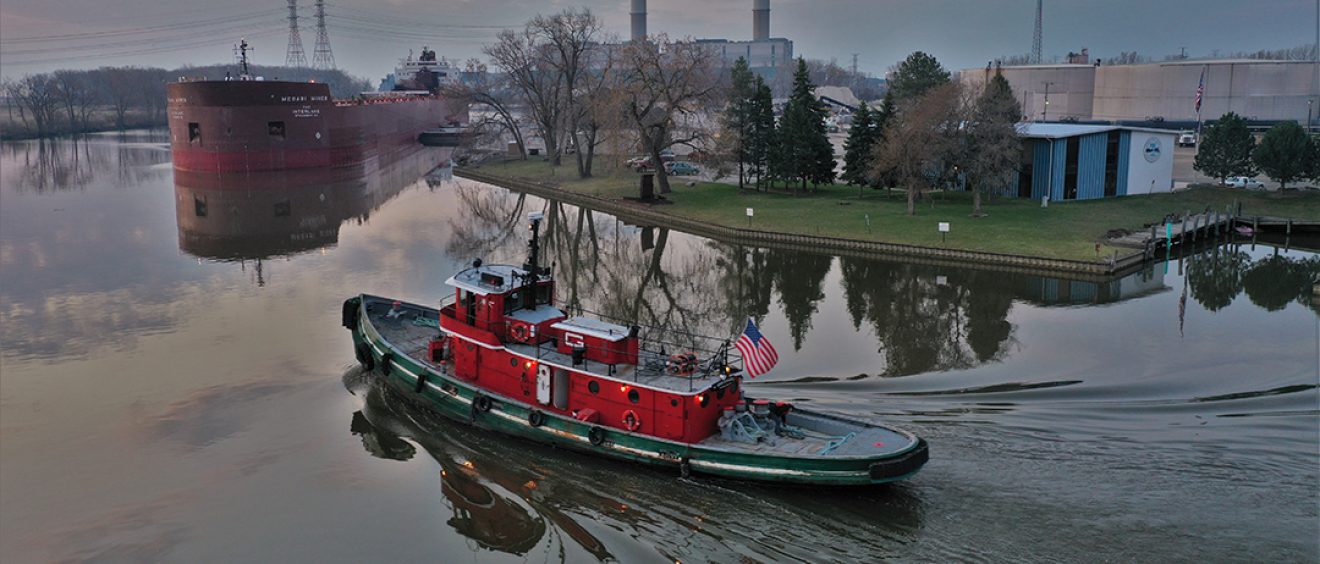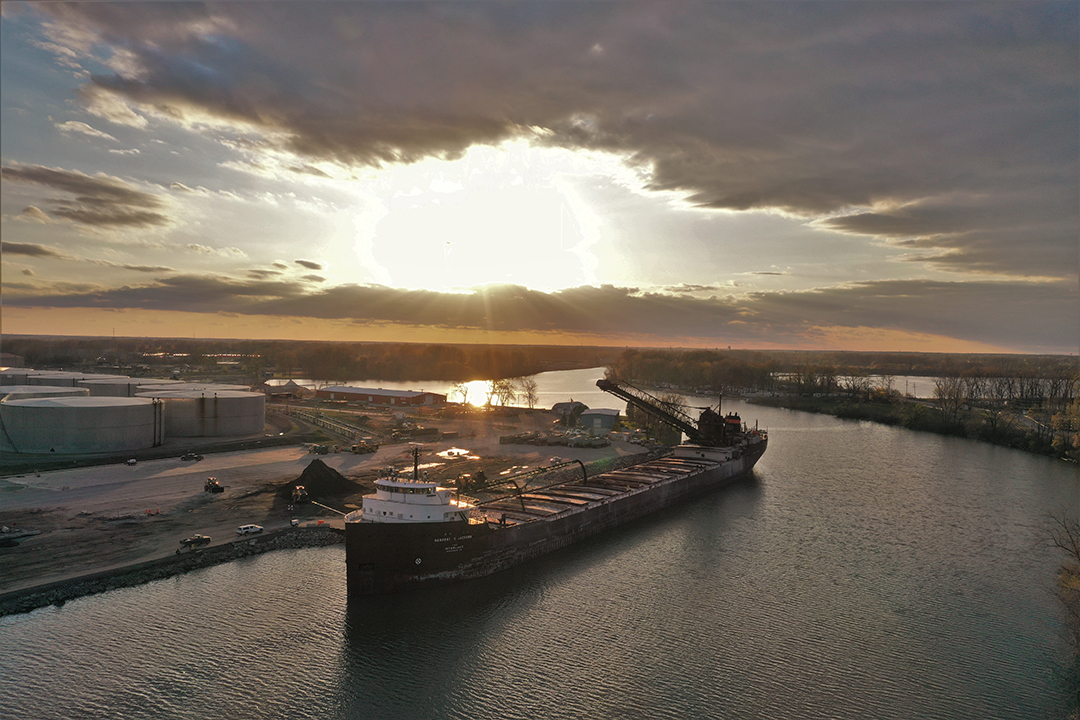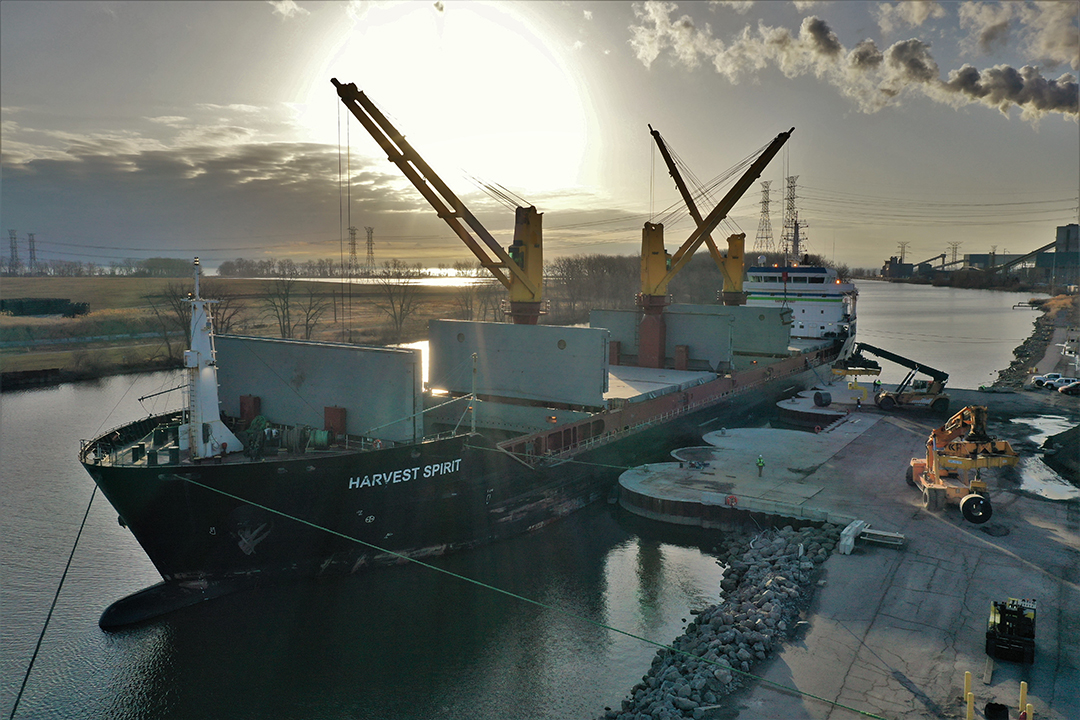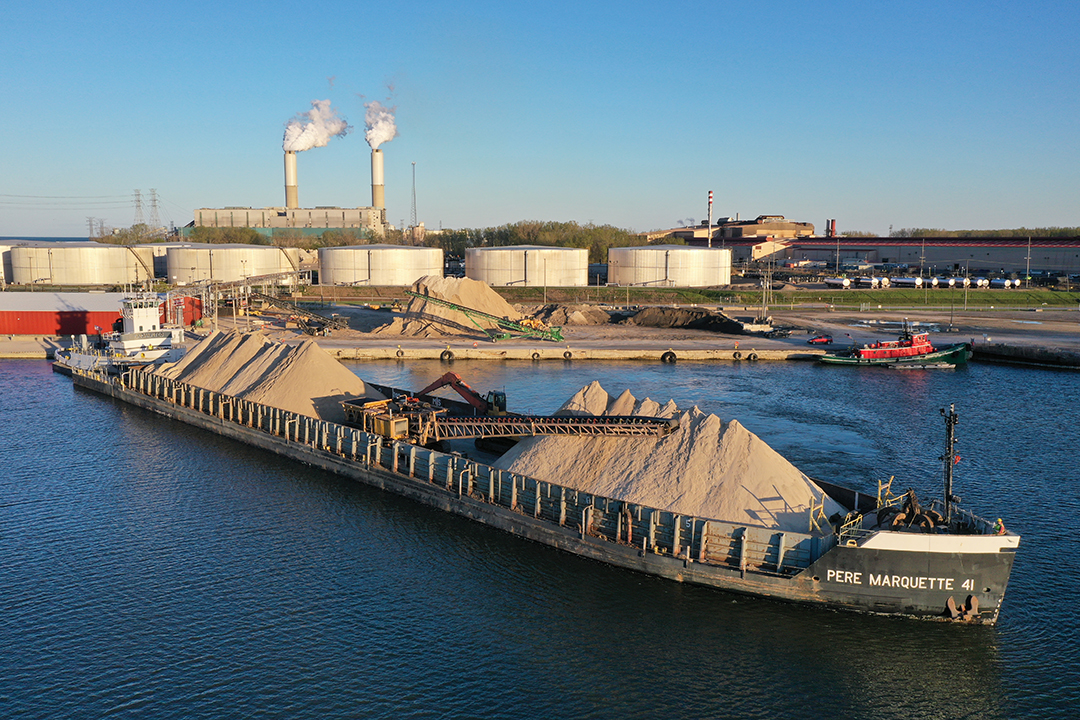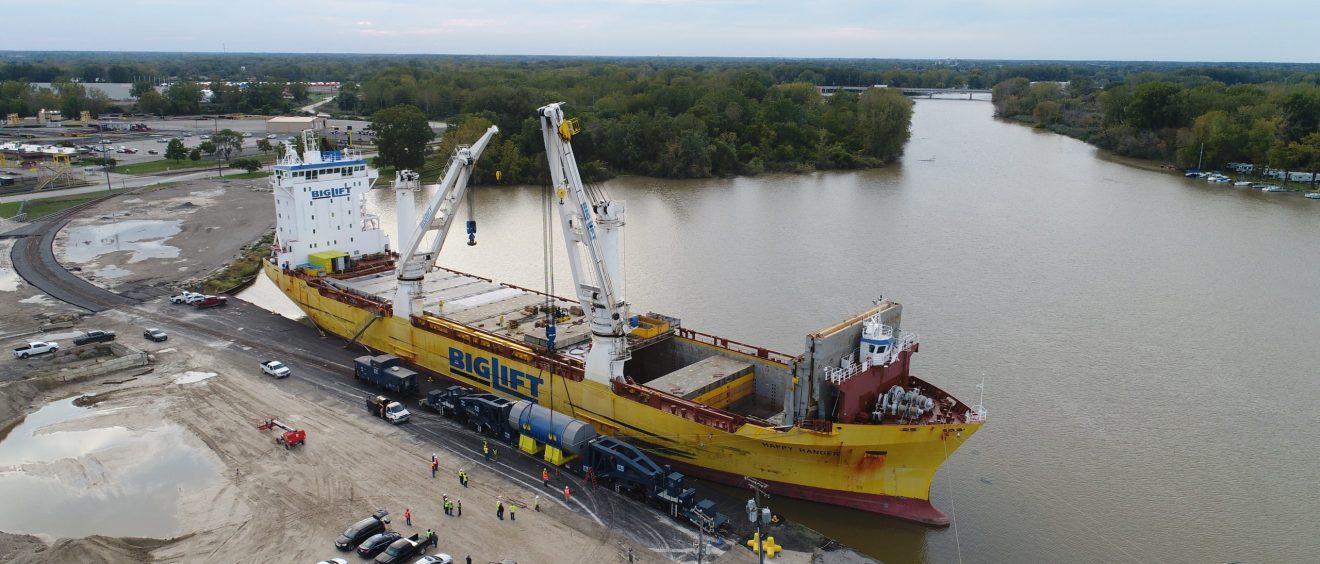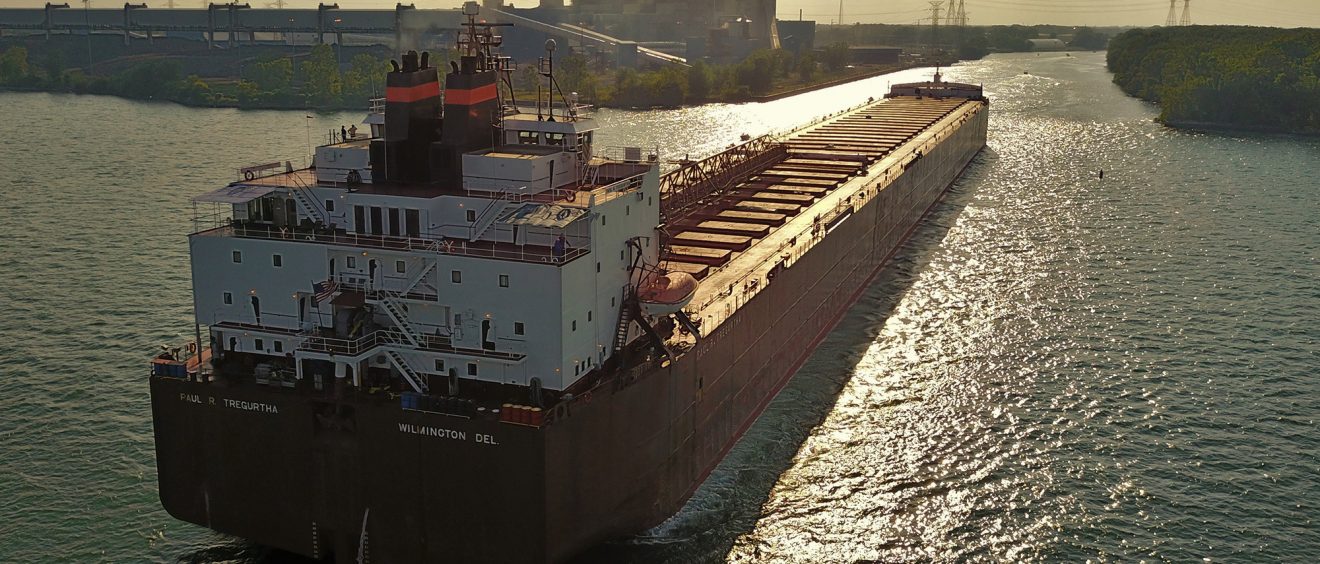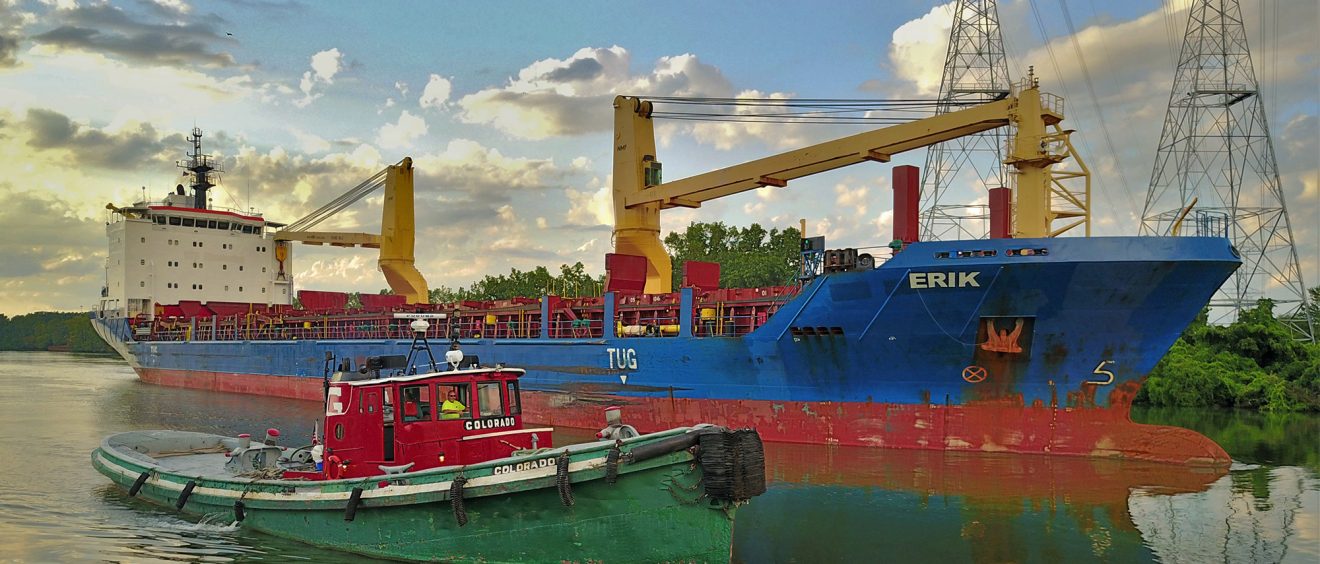The 2022-23 shipping season was another successful season for the Port of Monroe. Along with terminal operator DRM Terminal Services, the Port welcomed new ships to its docks and celebrated new cargo evolutions during the shipping season while setting the stage for growth in 2023 and beyond.
Highlights
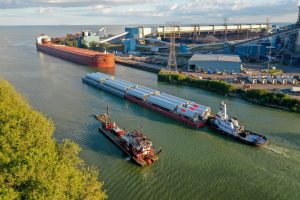
A full load of Monroe-manufactured wind towers depart in August 2022.
The Port undertook a large wind energy project that saw 90 wind tower sections manufactured in Monroe by partner Ventower Industries exported to Oswego, New York. This is just the latest renewable energy project the Port has completed with its stakeholders, previously handling and staging components destined for the Isabella Wind Project in Isabella County in 2020 and facilitating the export of Ventower wind towers to Peru in 2019.
A new Manitowoc crawler crane, purchased with funds from the Marine Highway grant program, was put into service. The Port is an active Marine Highway on route M-90 and continues to seek new short-sea-shipping opportunities.
In partnership with Gerdau and the Interlake Steamship Company, the Port realized an all-marine route for special bar quality (SBQ) steel manufactured at Gerdau’s facility in Monroe to the twin ports of Duluth, MN/Superior, WI. A trial shipment was loaded on Interlake’s Paul R. Tregurtha in August using the Port’s new crawler crane, demonstrating the feasibility of moving the cargo by vessel. Subsequent cargoes were loaded on the new Mark W. Barker. Over the past decade, Gerdau has invested nearly $400 million to transform the Monroe mill into a world class SBQ production facility and recently announced an additional $40.4 million investment at the Monroe mill to upgrade the facility’s rolling mill capabilities.
Additionally, the Port introduced a new alternate logo featuring the Port’s “flagship” tug Georgia of the Great Lakes Towing Co. Built in 1897, the Georgia celebrated her 125th year of continuous service as the oldest commercially operated tugboat in the world. The Georgia also became fully compliant with the U.S. Coast Guard’s Subchapter M requirements making her the oldest vessel in compliance.
Tonnage
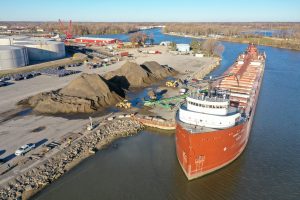
Herbert C. Jackson takes on a load of bottom ash at the Riverfront dock.
A total of 2,513,890 tons were received at the Port’s facilities and docks along the River Raisin during the 2022 shipping season. This represents a 10 percent increase in tonnage when compared to the previous season.
The DTE Monroe Power Plant received 1,753,772 short tons of coal and petroleum coke, as well as 246,745 tons of limestone.
The Port handled a total of 121,235 tons of bulk, a 3 percent increase from last season. The Port continues to be a valuable part of the beneficial reuse supply chain on the Great Lakes.
242,085 tons of steel coils were handled by vessel, smashing the total of 132,066 tons received the season prior and resulting in an 83 percent increase. 6,518 tons of SBQ produced by Gerdau were handled.
A total of 143,035 tons of liquid asphalt was received by Michigan Paving and Materials representing a 3 percent increase from last season.
The Port will continue to see shipments of liquid asphalt and steel coils through the winter as weather permits.
Visitors
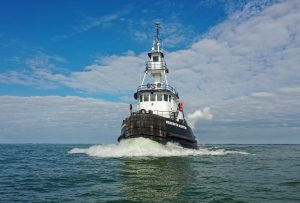
Ashton Marine tug Meredith Ashton underway on Lake Erie.
The Port welcomed Ashton Marine for the first time this past season. This Michigan-based tug company provided the transportation to New York during the wind energy project.
Four different McKeil Marine vessels called on the Port to deliver steel coils during the season, including the Alouette Spirit, Florence Spirit, Harvest Spirit, and Huron Spirit.
In total, the new Mark W. Barker visited Monroe three times in its delivery season, loading synthetic gypsum once and bar stock twice. The vessel’s square holds and wide hatch openings make it well-equipped to handle a number of cargoes in and out of Monroe.
Other newcomers to the Port in 2022 included the articulated tug/barge Clyde S. VanEnkevort/Erie Trader of VanEnkevort Tug & Barge and the Malcolm Marine tug Manitou.
The most frequent visitor to the Port was the Paul R. Tregurtha with 22 visits to the DTE Monroe Power Plant and 1 visit to the Riverfront dock. The Tregurtha was followed by the American Century with 18 and the Harvest Spirit with 11.
Check out this gallery to see all the ships that visited the Port during the 2022-23 shipping season!
On the horizon
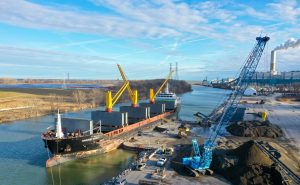
Harvest Spirit offloads steel coils at the Riverfront dock.
In July 2022, Michigan Governor Gretchen Whitmer signed the Maritime and Port Facility Assistance Grant Program Act which established the Maritime and Port Facility Assistance Office within the Michigan Department of Transportation that will create the Port Facility Improvement Fund. This increased maritime focus within MDOT will bring new funding opportunities to the Port of Monroe and other maritime stakeholders in the State of Michigan, which will enhance competition for stakeholders with this fund functioning as the local match in competitive federal grants.
In October 2022, the Port of Monroe was awarded over $11 million in funds from the Port Infrastructure Development Program for its Lake Erie Renewable Energy Resilience Project. The award is the largest in the Port’s history. The project will involve the rehabilitation of aging infrastructure at the Port including its turning basin dock which dates back to the 1930s and a small slip adjacent to the Port’s office that will be rebuilt into a “maritime readiness slip” to be used by local emergency response vessels. The Port’s existing riverfront wharf will also be rehabilitated, and a new identical wharf will be constructed on the riverfront to be used exclusively for the transfer of wind energy components. The project also includes the installation of shore power along the riverfront.
The Port continues to work with its stakeholders to develop the Michigan Maritime Gateway, a new container terminal that will complement existing maritime container operations on the Great Lakes and connect local importers and exporters to global markets. The Port received $5 million from the State of Michigan in support of this project.
Quotes

Port Director Captain Paul C. LaMarre III
“The 2022 shipping season was one of the most historic in the Port’s history. While achieving near record tonnage throughput the Port handled the most diverse mix of vessels and cargoes since the Port’s inception in 1932,” said Capt. Paul C. LaMarre III, Port Director, Port of Monroe. “Our continued growth is a testament to the hardworking men and women who breathe life into our operations. As we look to the season ahead, the amount of infrastructure investment and cargo throughput will only be rivaled by the pride each of us take in making the Port of Monroe more sustainable on behalf of the citizens and industry we serve.”
“Without the continued support and dedication of the Port’s management team, the local, state, and federal governments, the incredible successes to date would not have been possible,” said Stephen Gray, President, DRM Terminal Management. “DRM’s rapid increase in tonnage and investment in equipment and human capitol throughout the region is a testament to the potentials that become a reality when private and public partnerships are stewarded by good governing principles. I am particularly proud of our contribution to beneficial reuse and the impact it has on the local community and beyond.”
“The port commission is very proud of the achievements that the Port staff and DRM have accomplished, and we acknowledge that none of this would be possible without the exceptional leadership of our port director Paul LaMarre,” said Dale Brose, Chairman, Monroe Port Commission. “In the ten years he has been at Monroe, he has continuously demonstrated the ability to build effective public-private partnerships that serve the needs of Monroe citizens and strengthen local and regional industries.”
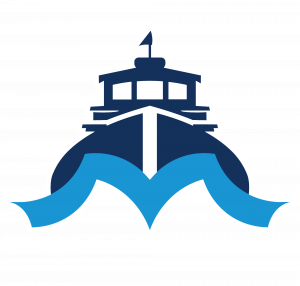
The Port’s new “Mariner Logo”
